How to Learn Healthy Cooking
This page will show you the simple steps for how to learn healthy cooking.
You will be relieved to know that making just a few small changes when you prepare meals can make a big difference in the health of you and your family.
If you’re trying to improve your health, one of the first things you can do is improve the way you cook your food.
But when people talk about healthy cooking, it can sound a little intimidating and a little less than delicious.
But healthy cooking doesn’t have to be difficult or boring.
With just a few small changes you can make a big difference in the health of you and your family.
Once you get used to doing things a different way, it will become simple and easy.
Eating Healthy: Making the Transition
You’ve already made the hardest decision…deciding to eat healthier, but now you want to know how you can make the transition to healthier foods.
This is especially true for those with families as they aren’t just preparing meals for themselves, but for everyone else in the family too.
Below are a few tips to help you make the
transition to eating healthier foods.
1. Do Your Research.
The first thing you should do is research various diets and healthy foods.
Look at the foods that make up different diets and determine why these foods are considered healthy.
Then, decide which foods in your current diet you are going to replace.
You’ll also need to determine which healthy food choices you’re going to add to your diet to.
2. Charts Help.
Deciding which foods to add and subtract from your diet can be difficult.
This is why many people choose to make a replacement chart…basically, these charts help them stay on track.
If you would like to make a chart, start by making two basic columns on a piece of paper.
In one column, write down the foods you would normally eat and on the other side, write down a healthy alternative.
For example, if you may have a bowl of ice cream wrote down on one side and across from it have a bowl of fresh fruit salad for the alternative.
As you make work on your chart, remember that it’s good to replace white grains with brown/whole grains, processed foods with whole foods and artificial foods/flavors with natural foods/flavors.
Finally, don’t try to transition too fast. Start by working on one thing at a time and then move on to another item on your list.
Increase Your Daily Food Intake.
A good way to get more, healthier foods in your daily diet is to increase the number of times a day you are eating.
Make a point to eat a few snacks a day and make sure they are high-quality, whole foods.
This will get more, healthy foods in your body and leave less room for the unhealthy foods.
It will also make the transition
of switching to healthier foods easier.
Tips for Getting Kids to Eat Healthy

With all of the junk foods out there today, getting kids to eat healthy can be a trick.
In fact, many kids associate the term “healthy food” with something yucky.
However, this doesn’t mean that you can’t change your kids’ minds about healthy foods and get them to enjoy eating healthy.
Below are some tips to help you out.
1. Hide the vegetables.
For
young children who adamantly refuse to eat veggies, hide them! Here’s how:
· Add pureed winter squash, carrots or sweet potatoes into cheese sauce.
· Steam a few veggies (broccoli, carrots, green beans, etc.) and put in a blender with a jar of spaghetti sauce.
Blend them all together and serve over spaghetti. Your kids will never know they’re eating veggies too!
· Mince veggies such as broccoli and add to homemade pizza – it’ll never be noticed.
2. Take it slow and replace one food at a time.
Getting kids to eat healthy can be like pulling teeth when you try to make a bunch of dietary changes at once.
However, it’s much
easier if you take it slow and only change one food at a time. For example:
· Stop using white flour products and start using whole wheat flour products.
You can easily do this with breads, pastas, cereals and the baking flour you use at home.
This is a food change that your family won’t likely notice.
· Replace frozen chicken nuggets and fish sticks with a homemade version.
Do this by cutting up healthy pieces of meat, coating in bread crumbs and baking them in the oven.
· Don’t make a full transition right away. Instead, ease into it.
For instance, replace only ½ or so of the white rice in a recipe with brown rice.
The next time you fix it, replace 2/3 of it and then the third time you make it, replace all of it with the brown rice.
3. Read to your kids about healthy foods.
Young children love to have stories and books read to them.
So, why not start reading to your kids stories that talk about healthy foods?
If you have older kids, take them to the library and help them choose an educational book about eating healthy and how healthy foods enhance the body’s functionality.
4. Be positive about food.
Help encourage your kids’ curiosity about healthy foods by being positive about food.
One way to do this is to ask your kids to help you prepare dinner.
Let
them get involved in the preparation process so they can learn about the foods
they’re eating and how all the ingredients go together to create a healthy, yet
tasty, meal.
New Superfoods to Add to the Grocery List
We’ve all heard about “superfoods” and the additional benefits they have for our bodies.
Well, now there are four more superfoods that you should be aware of.
They are: Acerola, Maqui Berry, Cloves and Baobab Fruit.
Below you’ll find a little bit of
information about each of these nutritional powerhouses and why you should add
them to your grocery list.
1. Acerola – Acerolas are grown in Central and South America and are often marketed as Amazon or Barbados cherries.
The skin is a yellowish color, but it’s the vitamin C content that has everyone amazed.
They have 40 times more vitamin C than oranges!
This gives them an extremely good antioxidant ranking.
These little guys are hard to find in the produce section of the grocery store, but can be found in extracts, powders and capsules.
2. Maqui Berry – The Maqui Berry is grown in Patagonia, which is located on the southern tip of South America.
Maqui Berries are similar to blueberries as they’re known for their antioxidant qualities.
In fact, while blueberries rank well on the ORAC score, Maqui Berries have a score that’s 10 times higher than blueberries.
It’s also said that the Maqui Berry may also help control weight too.
3. Cloves – Cloves have been around for a long time, but haven’t been known as a superfood until recently.
Spanish researchers have recently found a potent antioxidant activity within cloves that has gone unnoticed for some time.
It is believed that these antioxidants may have the ability to replace synthetic ones that are currently being used in food preservatives.
4. Baobab Fruit – Baobab Fruit is grown in Africa and has just recently received approval for export.
The fruit has an odd texture as it is naturally powdery.
This fruit is full of calcium and vitamin C, making it perfect for those who aren’t able to eat dairy products (or simply don’t like dairy products).
Even better, the seeds can be roasted and consumed for additional protein.
While it has been approved for export, the fruit still hasn’t hit many
grocery stores but it can be found in some yogurts for extra flavor.
While there aren’t any foods out there that are going to prevent illness 100% of the time, the foods that are dubbed “superfoods” are definitely worth checking out because they have the nutritious elements that have been shown to reduce our chances of contracting various illnesses and diseases.
It certainly won’t hurt to include them in your diet.
Forgo Deep Frying

One of the easiest ways to lower the fat content of your food and boost your heart health is to skip frying foods.
When you fry foods, you add a large amount of oil to your food.
While fat is something that your body needs, it doesn’t need it in such high amounts.
Fat is full of extra calories, so the oil you’re adding to your food will sneak in many extra calories you don’t need if you’re working to eat healthy.
In addition, most oils used for frying are not the healthiest kind for your heart.
Instead of deep frying your foods, there are a few different ways you can cook them.
If you’ve never tried cooking with these methods, you’ll have to experiment to see which one works best for you.
Grilling
One of the healthiest ways to cook is to use your grill. There are several different types of grills.
If you prefer to use outdoor grills, you can use charcoal or propane.
Gas grilling is quicker, but doesn’t have the same flavor.
Grilling can also be done indoors. There are many indoor grill models available for purchase.
Indoor grills won’t give you the smoky flavor that you get from outdoor grills.
However, they help you to eliminate extra fat from cooking and allow you to cook foods quickly.
Baking and Broiling
Using your oven is another option. Old fashioned baking and broiling produces delicious food without having to add excess fat.
Baking is the process of cooking your food evenly. When you broil food, you use only the top element of your oven.
With baking you get a constant temperature in the oven and your oven will cut off and on to keep that steady temperature.
With broiling, the top element will stay on constantly.
This can produce the same type of effect as grilling your food.
Broiling works well for cooking steaks and other types of meat.
You’ll have to turn the pieces of meat over in order to get consistent cooking on both sides.
You’ll also need a broiler pan that allows fat to drip through to the bottom away from your food.
Pan Frying
You can sauté your food in a pan as well. This is a type of frying, but you don’t need as much oil as you do with deep frying.
For this type of frying you can usually use one or two tablespoons of oil as opposed to a quart of it.
You can also use the most heart healthy oils with pan frying. You’ll want to use oils that are monounsaturated.
These oils actually help you to lower your cholesterol.
Extra virgin olive oil is generally the best choice for heart health.
Steaming
Steaming is another powerful way to cook. This is especially good for cooking vegetables.
You can purchase a special steamer that plugs into the wall or you can actually convert a pan into a steamer by inserting a special steaming basket.
With steaming, you’ll add a little water to the pan, then add the steaming basket.
You’ll place your veggies on top of the basket.
The water won’t actually cover the vegetables at all. You’ll then need to put a lid on the pot.
As you heat the water at the bottom of the pan, it creates steam that will surround the food and cook it.
Steaming doesn’t take a long time and it’s one of the best ways you can cook to preserve the nutrients in your food.
Slow Cooker
One of the greatest tools you can purchase for your kitchen is a slow cooker.
This is a healthy way to cook and can really be a timesaver in your life.
With slow cookers you can add ingredients to the pot, set the temperature, and then walk away for hours.
This is especially helpful if you have a job outside of your home or just a very busy schedule.
You can put healthy foods in to cook but then you can continue with your activities knowing that you’ll have a great meal for dinner.
The biggest complaint people have about slow cookers tends to be the cleanup.
However, there are liners now you can place inside your slow cooker that make cleaning it much easier.
You simply throw them away when you’re done.
Choosing Healthy Fats and Substitutions
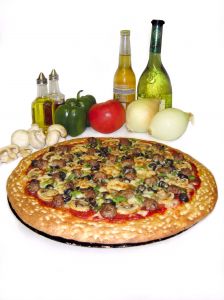
Many times when people begin to work to cook and eat healthy foods, they try to eliminate fats from their diet.
However, your body needs fats in order to function properly.
You’ll need to understand the difference between healthy fats and unhealthy fats.
Unhealthy fats are those that are saturated.
Saturated fats are solid at room temperature.
You find these fats in meats and dairy products.
You also find them in lard. These are the fats that can clog your arteries and cause you to have heart problems.
Unsaturated fats are liquid at room temperature.
They’re healthier for the body and actually contribute to good heart health – especially monounsaturated fats.
These fats come from plant sources.
Some foods where you can find healthy fats include:
· Olive oil, safflower oil, soybean oil
· Flaxseed oil (can be added to food, but not used to cook)
· Avocados
· Bananas
· Nuts – almonds, walnuts, pecans, cashews, etc.
When you’re cooking, you’ll want to use these types of fats as much as possible.
Adding nuts or avocado to a dish can boost the heart healthy fats.
And they also add delicious flavor and boost the excitement of healthy meals.
When you’re baking, you can also make substitutions for fats.
For example, if a cake or brownie recipe calls for oil you can substitute applesauce or carrot puree.
These will give the same texture and moisture without the fat.
If you’re not ready to go completely away from the oil, try substituting half of the oil for applesauce.
This will give you the best of both worlds.
In many recipes, the oil can be cut in half without significantly changing the texture.
You may want to experiment with our favorite recipes.
Eliminate Excess Sugars
Sugars are another area where people tend to have too much of a good thing.
You need to have sugars in order for your brain to work.
But the types of sugar that you eat can make a difference.
Eliminating processed sugars can boost your healthy cooking.
Ingredients such as white granulated sugar, brown sugar, and powdered sugar can be tasty, but aren’t great choices for cooking healthy foods.
Instead, you can try to have sweetness through more natural ingredients.
Honey and molasses are natural sources of sugar. Raw cane sugar is also a natural source of sugar.
While these choices are natural and less processed than other types of sugar, you’ll still want to use them in limited quantities. A little goes a long way.
Even better is to get your sources of sweetness from fruits.
They naturally contain sugar that can satisfy your sweet tooth while still delivering nutrients to your body.
The sugar you get from strawberries, apples, or grapes provides satisfying sweetness and also delivers fiber and vitamins.
In addition to getting sugar from sweet foods, many people get a lot of sugar from the drinks they consume.
Sugary sodas, sweet teas, and juices can give you a lot of calories without giving much in the way of nutrition.
This is a great place to start eliminating sugars from your life.
Switch to water with lime or herbal teas that are flavored naturally.
If you want to add sweetness, try a natural sweetener such as stevia to add that punch.
Other calorie free sweeteners can be less healthy.
There are many dessert options using fruits and other healthy ingredients that can help you to get the sweetness you crave without sacrificing your health.
As you eliminate sugar, you’ll get to a point where you really don’t crave it as much.
Lowering Your Sodium
Another considering with healthy cooking is lowering the amount of sodium, or salt, in your diet.
Salt can cause problems with high blood pressure and bloating.
While you need some salt in your diet for good health, most people get too much.
When shopping for ingredients, look for items labeled as “low sodium” or “sodium free.”
This way you can control how much salt you add to your meals. When you do use salt, choose natural sea salt.
Add Flavor
For many people the idea of healthy cooking is synonymous with bland food.
But if you’re going to cook healthy it’s critical that you enjoy what you’re eating.
Otherwise you won’t be able to adopt these techniques long-term.
It’s important to make sure that while you’re eliminating unhealthy fats and sugars that you don’t forget to add flavor.
Natural spices and herbs can be the best way to enhance the flavor of your food and can boost your health, too.
If you haven’t used many spices before, now is the time to add spice to your life.
The following spices are critical to have in your pantry as you make the switch to healthy cooking:
· Cinnamon
· Garlic
· Pepper (black, red, white, cayenne)
· Nutmeg
· Paprika
· Salt-free seasoning
· Italian seasoning
· Basil
As you continue to cook, you’ll add more and more spices to your supply.
But these are general spices that can get you started. You’ll also want to consider keeping fresh herbs on hand.
Growing your own is the least expensive way to enjoy them.
As the season begins to end, you can chop up your herbs and freeze them in ice cube trays.
This way you can continue to enjoy them year round.
Some great herbs to get started with include the following:
· Parley
· Oregano
· Thyme
· Sage
· Cilantro
· Basil
· Rosemary
Adding fresh spices will make any dish more flavorful. Remember that healthy cooking doesn’t have to be boring and bland.
The more flavor you add, the more you’ll enjoy what you’re eating.
If you enjoy the food you eat when cooking healthy, you’ll be more likely to make a long-term change.
If you’re not familiar with cooking healthy, it can take some time to adjust.
But as you add a new technique you’ll find that it can be easy and rewarding.
As you cook more and more, you’ll begin to feel comfortable with experimenting with recipes – and unleashing your inner chef can also be a lot of fun.
Eating Healthy on a Budget

The most common complaint by people who desire to start eating healthier foods is the price for these foods at the grocery store.
If you’ve ever compared the prices of organically grown apples to regular apples then you know how much more expensive the organic ones are.
The same is true for whole grain crackers versus regular white crackers.
However, not everything is just like it first appears.
Maybe it is more expensive to buy whole grain crackers, but what if you bought a bag of whole wheat flour and made your own snacks?
You would be able to make a lot more snacks with that bag of flour than you would be able to buy for the same price.
Sometimes, we have to change the way we think about health foods and their
prices in order to get the most bang for our buck. Below are a few tips.
1. Cheaper isn’t always better.
It’s easy to get excited over a good deal – like a $2 bag of potato chips that you’ve got an additional coupon for.
However, we all know how unhealthy potato chips are.
You may be better off purchasing a 3 lb. bag of potatoes for $2-$3 than the potato chips. Why?
The potatoes will last longer and you’ll be able to make more nutritious dishes with them than you can the potato chips.
The above example is true for most processed foods.
While at first glance, they
appear to be cheap, they really aren’t when you consider how much more you can
get when you by the whole food version.
In other words, instead of purchasing the processed foods, purchase the whole
food ingredients instead.
For instance, instead of buying a loaf of bread – buy a bag of whole wheat
flour and make your own!
You’ll not only get more bread for the price, but you’ll also get healthier, better-tasting bread too!
2. Reduce meat consumption.
Nothing will make you go over budget faster than meat. Meat is expensive, that’s all there is to it.
While it’s not very cost-effective to replace your meat with substitutes such as tofu, you can save money by purchasing other protein rich foods such as beans and brown rice.
This doesn’t mean you have to cut out all meats, but reducing your meat consumption will definitely help your grocery bill.
3. Shop for seasonal foods.
When you begin shopping for healthier foods, you’ll most likely start buying more fruits and vegetables.
In order to stay under budget, you will need to stick to the foods that are currently in season.
Out-of-season foods are much more expensive than in-season foods.
And, you can always buy extra of the in-season foods and can them yourself (or freeze/dry), giving you the ability to eat them when they are out of season!
4. Shop the outside edges.
The healthiest foods are found on the outside edges of the grocery store.
The prepackaged, processed foods are found in the center aisles.
Therefore, purchase the majority of your groceries from the outside edges rather than the aisle-foods.
Now, keep in mind some whole grain foods are found in the aisles such as flour and dried beans.
However, this is the exception to the rule…most
of the foods in the aisles are not healthy foods.
Saving Money on Food
There are certain necessities everyone needs to survive, one of these is food.
However, with the shape of the economy, people are looking for ways to cut back and save money. I
t is possible to save money on the foods you eat, even if you are eating healthier foods!
Below are some tips to help you do this.
1. Eating Food from Home –
So much money is wasted when we choose to go out to eat, whether it’s for a quick lunch or dinner at a restaurant.
Not only is a lot of money wasted when we eat out, but most of the time, the food is not as healthy either.
Therefore, you can eat healthier meals and save money by eating food from home.
Does this mean you have to eat all of your meals at home? Nope.
If you work away from home, consider packing your own lunch and eating at the office.
If you cook meals at home, then simply bring leftovers for work the next day.
You can even bring your own tea, coffee and/or snacks with you to work, which will save you even more money.
2. Stay Away from Fast Food –
It’s hard to turn on the television without seeing an advertisement for a “great deal” at a nearby fast food restaurant.
Most people think that if they can get lunch for two for under $10, they’ve gotten a good deal.
However, upon close inspection, fast food isn’t nearly that good of a deal. Even if you eat off the dollar menu.
Not when you consider that you can fix yourself a healthier, homemade sandwich from home for far less than a dollar.
3. Save Money on Drinks –
Restaurants and fast-food business make a ton of money on the drinks they serve.
A regular sized drink (aside from water) will cost you $1.50 to $3.00 at most eating joints.
However, you can get several regular sized drinks for less than $1.50 when you
by a 2-liter or family sized tea bags and make your own drinks.
If you prefer bottled water, consider investing in a reverse osmosis system (if you don’t have one), or even a cheaper water filtering system, and bring your own bottled water from home in a reusable bottle. You’ll save a lot of money here too.
4. Buy Extra – If you find something on sale at the store that can be easily preserved, by it in extra quantities.
This doesn’t mean you have to be extreme about it like the people on Extreme Couponing shows, but stocking up on a few items here and there to save money, is a great idea.
You can also save money by purchasing food at the grocery store that has been “damaged.”
Generally, it’s not the food that is damaged, but the packaging that was damaged during transportation, but grocers still discount these items!
The Difference of Cooking at Home

In the past, many people didn’t think twice about going to a restaurant for dinner or swinging through the drive-thru on their way to soccer practice.
However, with the condition of the economy and the impact it’s had on people’s bank accounts, many people are now opting to cook at home instead of heading out for meals.
Not only does it
save money, but it’s also a healthier alternative too. Below are a few benefits
associated with cooking at home.
1. There are no “mystery” ingredients.
When you begin to cook meals at home for your family, you become aware of all the ingredients that you and your family are eating.
This isn’t the case when you
go out.
Not only are there no “mystery” ingredients when you cook from home, but you can
also control the levels of sugar, sodium and other caloric content too.
Additionally, when you cook at home, you don’t have to worry about whether a meal really is “whole/multi-grain” as advertise, because you can switch up the ingredients yourself to make sure it is!
2. It’s a lot healthier for you and your family.
As mentioned above, you control the ingredients when you cook your own meals at home.
This means that you are able to feed your family much healthier foods than you would if you went to a restaurant.
You can ensure the meals you cook include fresh produce and healthy, whole foods…this is a rarity at restaurants and fast-food chains.
Additionally, not only are families who eat home-cooked meals generally healthier in body, but studies have shown that they are also healthier socially and emotionally because they’re spending more family time together.
3. You’re able to plan out meals in advance.
Cooking at home allows you the ability to plan out dinner in advance.
Instead of eating “on the fly” and choosing a restaurant at the last minute, your meals are thought out and planned in advance.
Many people even cook several meals at home at one time and then reheat them in the oven on the night they want to eat them.
This is often great for busy families who are always on-the-go.
4. There really isn’t that much time involved.
A lot of people dislike the idea of cooking at home because they think it takes a long time.
However, cooking from home actually takes less time than going out to eat does.
Just think about how much time it takes to load everyone up, drive to the restaurant, be seated, order the food and get served.
The majority of home-cooked meals only take 30 minutes to an hour to prepare and clean-up doesn’t take long when you get the whole family to help.
When you compare the two scenarios, cooking from home actually takes less time than eating out.
Basic Equipment for Healthy Cooking
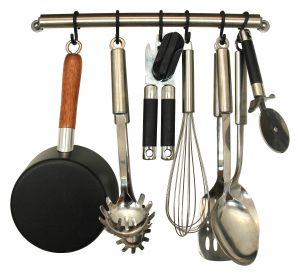
Making the decision to start cooking healthy is great, but there is some basic cooking equipment that you will need first.
The list of supplies below will help cooks of all skill levels
create quick and healthy meals for their families.
1. Cookware – You’ve probably got an assortment of pots and pans already, which is good.
However, you may find it beneficial to replace some of your current cookware pieces with more expensive, longer-lasting pieces.
Cast iron is a great cookware option as it’s made for durability.
Additionally, cast iron is said to help boost the nutritional value in foods as it impart iron.
Other healthy cookware options include copper-bottomed stainless steel and enamelware.
2. Blender – If you want to eat healthier, you definitely need to invest in a good blender. Blenders will allow you to make a quick fruit smoothie as well as a number of other things. For instance, you can use a blender to make fresh mashed potatoes, homemade salsa, fruit and veggie purees and much more!
3. Pressure Cooker – A pressure cooker is another great tool for the healthy cook.
Not only will it save you time, but it will also keep more nutrients locked into the foods you cook in it.
You can cook foods such as dried beans, brown rice, vegetables and even meats in a pressure cooker…in far less time!
There is a wide variety of pressure cookers available for consumers, making it easy for you to find one in your price range!
4. Knives – Every cook needs some good knives in the kitchen, regardless of whether you’re cooking healthy or not.
While you don’t need an entire set of good knives, you
will need two or three reliable knives.
Some knives are very expensive, but remember that a good knife can last a
lifetime when cared for properly.
In addition, good knives make preparing food much easier.
The three knives you should start with are a bread knife, paring knife and a large chopping knife.
5. Food Scale – Many people think food scales are a waste of space.
This is not true, especially for those who want to start cooking healthier meals.
Food scales allow you to count calories, control portions and measure precisely for recipes!
6. Juicer – Finally, every healthy cook needs a good juicer.
Juicers are similar to blenders, but they are a little different in the fact that they remove plant fibers in foods such as carrots and wheat grass – a blender isn’t able to do that.
What’s the benefit of this? Many believe that the body is better able to absorb nutrients into the bloodstream when the digestive system doesn’t have to mess with extra fiber.
Click below to check out the most popular models being sold on Amazon right now.Note: You will often get a good discount on the usual retail prices, and sometimes even free shipping to your door, when you buy from the links featured here!
CLICK HERE >>> for details of Juice extractor machines
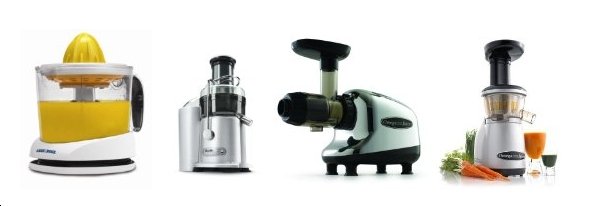
Time-Saving Tips for Low-Fat Cooking
Many people want to start eating low-fat meals, but they aren’t sure they can do it consistently because they don’t feel they can include their family. If you feel this way, there is good news…
you can eat low-fat meals and still feed your whole family! Below are
some tips to help you get started.
1. Some fat is good.
The big mistake made by many people who start low-fat diets is that they try to cut out all fat.
Don’t do this. You’re body actually needs some fat in order to absorb fat soluble vitamins, such as Vitamin D.
Therefore, don’t eliminate all
fats from your diet…be sure to keep healthy fats in it.
2. Look at low-fat options.
More than likely, you’ll be able to easily find high-fat foods upon a quick inspection of your refrigerator.
To get started on your low-fat diet, replace these foods with the low-fat versions.
This is especially true for dairy products. Almost every recipe calls for dairy products, using the low-fat products will help you reduce the fat content you and your family consume.
You
can also find many products in fat-free versions too, which will help even
more!
3. Cook with lean meat.
When it’s time to purchase meat, choose meats that are lean.
If you are going to cook with ground beef, get the 93/7 cut.
Also, start cooking with other lean meats such as fish and poultry.
While
salmon is a “fatty” fish, it’s good for you because it contains the healthy
fats your body needs…therefore, don’t be afraid to fix salmon for dinner one
night.
4. Stop frying foods.
Frying foods adds an enormous amount of fat to meals.
Therefore, learn how to steam, bake, broil and poach foods instead.
When sautéing foods, use broth instead of
oil. If you must use oil to cook with, use olive oil.
5. Consider non-stick cookware.
While there are some benefits to cooking with cast iron, this cookware is very heavy and actually requires a lot more oil/grease during cooking to prevent foods from sticking.
This isn’t the case with non-stick cookware. So, you might
consider switching to non-stick cookware.
6. Learn healthy substitutes for baking.
A lot of recipes call for some kind of fat. You can actually replace most of these fats with plain yogurt and some fruit purees (apple and prune are the best).
Therefore, start reducing the fats in recipes by using these healthy
substitutes.
7. Always stock low-fat, plain yogurt.
For people who want to start cooking low-fat meals, stocking low-fat, plain yogurt is a must.
You can use this as a substitute for sour cream and even strain it for a cream-cheese texture.
And, instead of using heavy cream, thicken sauces with the yogurt!
Grass-Fed and Pastured Foods: Why They’re Better for You
Many people don’t think much about the animal products they purchase at the grocery store, but most of those animals are fed grain.
The most common grains used to feed animals are soybeans and corn.
While this has commonly been an acceptable feeding method for
livestock, now there is a movement supporting pasture-fed animals over grain
fed animals.
There are several advantages of using animal products from pastured and/or
grass-fed animals.
And, if you’ve noticed at the grocery store, it reflects in the price.
Below are some of the benefits of purchasing pastured/grass-fed
animal products.
1. It’s Safer –
Studies have shown that grass-fed beef has a lower E. coli bacterial count than grain-fed beef does.
These studies have also shown that the stomach acid found in grass-fed beef is much more likely to consume the E. coli that is found in these animals, which makes it even safer.
2. Better Nutrition –
There is a difference in the taste and look of the pastured and/or grass-fed animals products compared to those raised on grain.
Just take the eggs from a pastured chicken and compare them to the eggs of grain-fed chickens…the yolks not only look different, but they taste different too!
The meat from grass-fed beef and poultry is also better tasting than that from grain-fed animals.
There are greater amounts of Omega-3’s, Omega-6’s and CLAs
in grass-fed meats too.
Additionally, these meat products are generally leaner too.
Grains help fatten up animals so farmers can make more money at market, sadly, the extra fat gets passed on to the consumer through the meat.
3. Better for the Environment –
When animals are being pastured instead of grain-fed, they are not only being fed, but making good use of the land.
The majority of animals that are grain-fed are raised in feed lots.
These feed lots are not only crowded, but unsanitary because of the waste build-up.
When storms occur, the run-off can easily be
contaminated with the waste found in feed lots.
In addition, biodiversity of plants is encouraged by pasture-feeding animals,
which is beneficial to the nearby ecosystems.
Finally, a tremendous about of land is used for raising crops for grain-fed animals.
This land could be used
for pasture-feeding instead.
The Animals Benefit Too –
Finally, animals that are allowed to graze in their natural environment (pasture land) instead of being cooped up in a crowded feed lot are happier.
Disease is also a less prevalent problem in grass-fed animals than in feed lots too.
And the animals
are generally treated better when let out to pasture than those found in feed
lots.
What You Need to Know About Organic Vegetable Box Schemes and CSAs
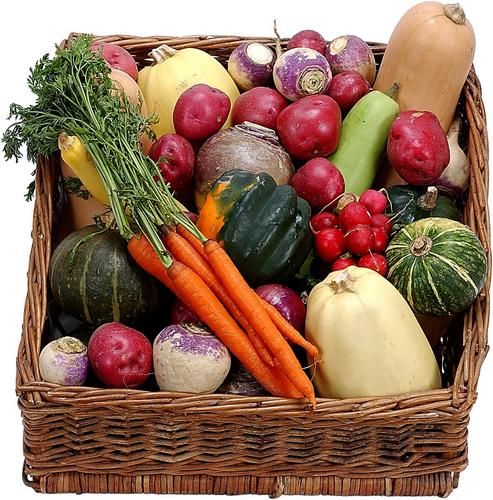
You may have heard people talking about the good deals they’re receiving through their vegetable box scheme/CSA (community supported agriculture).
For some, these programs are great because both the local farmers and the consumers are getting a good deal.
Basically, local farmers are supported through investments made by consumers
and in exchange, the consumers receive fresh fruits and vegetables.
Sounds pretty tempting, right? Before you make the commitment, read through the
following considerations first. It’s best to know what you’re getting into
before you sign up.
How It Works –
Basically, when you sign up for a CSA box or vegetable box scheme, you agree to pay a set fee for a full season and in return, you will receive a box of fresh, season produce in scheduled intervals.
It may be once a week, bi-weekly or once a month, it just depends on what the conditions are in your agreement.
The produce you receive will be seasonal produce.
You won’t be getting any out-of-season produce, so
you need to keep that in mind when deciding what season to sign up for.
What Are the Advantages?
There are several benefits for joining a CSA or vegetable box scheme.
First and foremost,
the produce you receive will all be fresh and is organically grown. Additional
advantages include:
· It’s better for the environment as it take much less time and distance to get the produce from the farm to your house. This also means the food will contain less preservatives too.
· The produce is fresh and in-season.
· Generally, these plans are more cost-effective as you don’t have to pay additional money for the fuel it takes to transport the produce to the store.
· You’ll receive fruits and vegetables you’re not used to eating, which will expand you and your family’s food palate.
·
It feels good to support community farmers
and eat healthy, organic foods.
What Are the Disadvantages?
As with everything, there are a few
disadvantages to signing up for a CSA box or organic vegetable box scheme. They
include:
· You have to commit to a full season, and possibly a year. It doesn’t matter if you’re happy with the service or not, you’re committed for the terms of the contract.
· It’s possible that you will receive fruits and vegetables that no one in your family likes and you don’t know what to do with.
· You are not able to choose what produce you receive. You get whatever is available. There may be times when a substitution is made. For instance, you may receive eggplants if bell peppers didn’t do well that year.
·
It’s possible that you may lose your produce
if you are unable to make the scheduled pick-up time.
So, How Do You Find a Good Program?
Basically, start by asking around in your community.
Find out who offers these programs and what they are selling.
Word-of-mouth will also help you determine which farmers have the best reputations and which ones have bad reputations.
Visiting the local farmer’s market is a great place to find knowledgeable people about the subject. You can also search online as well.
Important!
The food pyramid guidelines suggest that you eat around 4-6 servings of vegetables a day.
If you are not keen on eating them, then this can be a problem.
One solution is to learn how to incorporate more vegetables in your meals in a way that disguises them - get sneaky to get healthy!
Continue to Research
Now that you have finished reading this guide you should have a better understanding of what it will take to transition into living a healthier lifestyle where you cook healthier meals for you and your family.
You also now have some helpful information on ways that you can eat healthy on a budget and save money on food – which is the number one complaint people have when it comes to eating healthy (how much more expensive the food is).
And last but certainly not least you even have some tips on ways that you can get your kids to eat healthier too!
More Resources
Eating healthy is about many things. For one, you can eat anything you want, as long as you eat the proper portions.
The truth of the matter is that most of us eat with wild abandon and count the calories later. Unfortunately, later is too late.
Just about any meal that you eat can be morphed into a healthier version.
It only takes a little know how about ingredients and substitutions.
And, creating your meals at home is a good way to cut out a lot of the fat and calories that you would encounter in the same meal at a restaurant or prepackaged in the grocery store.
Here I'll feature helpful resources to show you more ways for how to learn healthy cooking as I come across them.
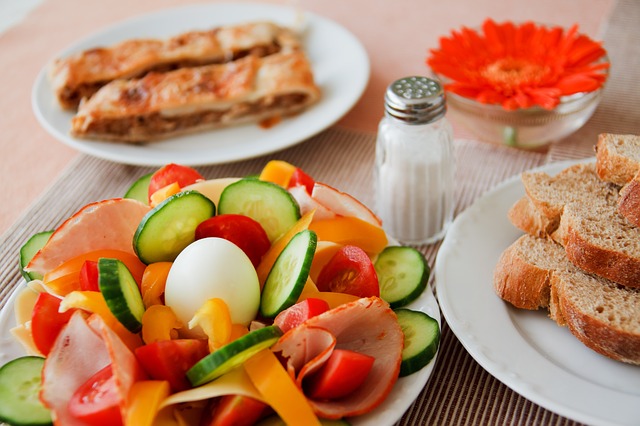
Below here I'm featuring more pages with helpful how-to-do-it tips on how to learn healthy cooking.
Feel free to submit your own story or article about it, and I will create your own page here with your contribution for the community to read.
More Tips for How To Do It Yourself: Cooking & Recipes
Do you have a tip you want to contribute here? Share it!
Read the latest updates & rest of the how-to tips here:
Click the Title links below to see the latest how to do it tips and contributions to this page...
Symptoms Of A Gluten Intolerance And The Best Substitutes For Gluten In Baking
Gluten intolerance is a fairly common concern these days. Though often overlooked by a large majority of the population, a gluten intolerance can cause …
The Surprising Truth about Eating a Diverse Diet
For years nutritionists recommended eating a diverse diet, but it turns out that advice may be outdated. A recent study by the American Heart Association …
Top 7 Tips for Preventing Food Poisoning
Also known as foodborne illness, this fast-moving illness is caused by bacteria, viruses or parasites, or the toxins they produce. Typical symptoms include …
6 Easy Ways to Use More Healthy Green Vegetables in Your Cooking
You know you should eat more green vegetables, but you may be tired of adding them to a salad each day. However, there are other options to use these healthy …
A Gradual Approach to Healthy Eating
A healthy diet is the most important component of overall health and wellbeing. Unfortunately, changing your diet can be extremely challenging.
It’s …
How To Enjoy A Whole Food Diet
In this article, we are going to discuss 10 tips that will allow you to shift your diet in a way that implements whole foods. This way of eating is ideal …
3 Foods to Avoid if You Have Digestive Problems
People with a propensity toward digestive problems should refrain from eating “trigger” foods – foods that can cause a digestive response ranging from …
Four Great Recipes Using Spices
One of the fun things about learning how to cook from scratch is getting to experiment with different seasonings. If you love eating out and/or buying …
Ways to Use Spices in Desserts and Baking
Whenever people hear the word "spices", they instantly think of savory dishes like soups and stews. However, the truth is that spices can enhance desserts …
Nine Spices That Give Health Benefits
Spices have been used in Ayurvedic medicine in India and traditional Chinese medicine (TCM) in China for more than 5,000 years.
The most obvious path …
Common Spices around the World and What They Are Used For
Spices are used in every cuisine in the world to season food, and sometimes to color it or preserve it. Far Eastern cuisines tend to use a range of herbs …
Seven Great Spice Mixes to Make
Cooking with spices can add a whole new dimension of flavor to your cooking. Creating your own blends can help you cater to your family’s taste, and save …
5 Spices That Can Boost Your Digestion
Most people think spices flavor only food, but there are many that have shown to have health benefits – especially for the digestive system. While there …
Tips for Healthy Eating
At the beginning of every year many people make losing weight one of their New Year’s Resolutions. While this is a great goal to have, it is important …
5 Meal Planning Hacks You Need to Start Using Today
One of the best habits for eating healthy, avoiding poor food choices, and weight loss is meal planning. There has been quite a bit of research done demonstrating …
Making Good Carb Choices - Eat Your Veggies
Low carb diets have been around for a very long time. Some people have success with them, while others tend to cave in and go back to eating carbs. And …
Eating Gluten Free: Medical Conditions And Meal Ideas
Without a doubt, you’ve heard numerous health experts preach about going gluten free. Do you have the slightest clue what gluten is? If you are like most …
A Balanced Diet - Back to Basics For Better Health
With so many diet fads and this diet approach or that diet approach going around, it’s often hard to decide which diet you should consider.
Some diets …
GMOs And Your Food 101
GMOs are animals and plants who have been genetically altered. They are modified so that our crops and more resistant to pests, weeds, and any other diseases …
Discover the Link Between Foods You Eat and Prediabetes
Over the past few decades, the statistics for diabetes has skyrocketed. In the US alone, over 50 million people have prediabetes.
Getting diagnosed …
Discover the Facts About Sugar, Salt, and Which One is Worse
You may have heard the debates about sugar and salt. Which one is worse for your body and more important to avoid? The key is moderation for both sugar …
A 5 Minute Guide to Healthy Meal Planning
When you're rushing through a busy day, your diet may be the last thing on your mind. Maybe you grab a doughnut during a morning meeting, buy lunch from …
Monounsaturated Fats 101
The over consumption of fat in the average western diet has been linked to various chronic diseases. However, since the 1960s there has been a recognition …
What Does Proper Nutrition Really Mean?
Nutrition is defined as nourishment or energy that is obtained from consuming food or the process of consuming nourishment and energy in the proper amounts. …
Herbs: Cooking With Natures Perfect Plants
Herbs are some of the most nutritious and important parts of a healthy diet. It is a known fact that eating a plant heavy diet benefits your health, waistline …
10 Reasons To Stop Eating Junk Food
We’ve all been told that junk food is bad for us, but because it tastes so darn good, most of us continue eating it, after, fruits and vegetables can’t …
8 Best Plant-Based Sources of Protein
Protein makes up the the building blocks of the body and is necessary for good health. Most people get their daily protein from animal sources in the form …
7 Ways Turmeric Benefits Your Health
Turmeric is a commonly used spice that originates from the Curcuma plant. We most likely know it for its spiciness and use in dishes such as curry.
…
7 Signs That You Aren't Eating Enough Vegetables
Vegetables play a vital role in proper nutrition. Along with a diet rich in whole grains and fruits, veggies can deliver all of the essential vitamins, …
A Guide to the Best Plant-Based Milk Alternatives
Are you considering a plant-based milk alternative? If so, you probably understand the dangers of dairy. Once upon a time (in the unfortunately not too …
5 Ways To Eat Healthier Even For The Very Busy
It can be a real challenge for busy people to eat healthy and nutritious meals. There is of course the time issue – just not enough time in the day for …
Health Benefits Of Dark Chocolate
Everybody has a sweet tooth, and chocolate is a no-fail satisfier. Dark high quality chocolate in particular (not your typical Snickers) has several health …
Why Are Processed Foods Bad for You?
Do you love fast food burgers, baked goods and delivery pizza? If so, you are eating processed foods.
When you take a bite out of an apple or eat banana, …
Scary Results From Eating Too Much Protein
According to statistics, most individuals in the US take in 3-5 times more protein than they need. An ideal protein intake is about 0.5 grams (500 mg) …
Symptoms of Vitamin and Nutritional Deficiency
Are you getting all the nutrients you need for your body to function properly? Guess what? Regardless of what you believe, the answer is ... probably not. …
Can You REALLY Build Muscle on a Plant-Based (Vegan) Diet?
Are you avoiding a plant-based diet because you think it is impossible to build muscle and strength? Unfortunately, this myth is alive and well.
Serious …
Your Best Food Choices To Prevent Cancer
Far too many lives are negatively impacted, or taken too soon by a wide variety of dangerous and relentless cancers.
Scientists are hard at work trying …
Nature’s Superfood: The Nutrition And Health Benefits Of Buckwheat
Time and again nature reminds us just how good it is at creating nutritious and healthful food for humans to consume.
Why so many of us reach for factory …
An Anatomy of Spirulina: Nature’s Perfect Food
Many of the best foods have been perfectly crafted by Mother Nature herself. They hold a variety of hidden health benefits and offer vitamins and minerals …
The Nutrition and Health Benefits of Chia Seeds
Chia seeds have been used by mankind for their health benefits for centuries. Both the Mayans and Aztecs have used these seeds in their diets for generations, …
An Anatomy of Amaranth: Nature's Perfect Food
Many of life’s perfections are created and found in nature. Beautiful gems, medicines and perhaps most importantly, food and water, are found in nature …
Learn About Gluten Intolerance and Kids
Cookies, cake, bread, pizza, pasta, breaded chicken, hamburger and hot dog buns are all favorites of kids the world over.
But when your child has …
Are All Calories Created Equal?
Interestingly, the calories your body takes in may not be the same as the calories your body uses. A 2500 calorie per day diet may cause some people to …
Celebrities with Food Allergies
We often think of celebrities as being invincible and even immortal. But just like regular people, they can experience food allergies. Often when a celebrity …
Is There Such a Thing As Healthy Fat?
There is no such thing as healthy obesity, but do healthy fatty foods exist? Are there foods which are naturally good for you, delivered in tasty food …
Sugar Salt Play Havoc with Your Health
While there is a ton of emphasis on exercising to stay fit you should not overlook your eating habits either. Healthy eating is just about one of the most …
Nature’s Perfect Food: An Anatomy of Brussels Sprouts For Your Health
You may remember Brussels sprouts as those small, round veggies that ended up on your plate as a child. Like most children, you probably didn’t want to …
5 tips for managing irritable bowel syndrome with your diet
When you have the condition, it’s important to learn about managing irritable bowel syndrome with your diet. Here are five tips to help you manage IBS …
What Triggers Food Allergies?
An allergic reaction to food is your immune system's response to certain proteins found in food.
Milk, eggs, tree nuts, peanuts, wheat, fish, shellfish …
Omega J8005 Nutrition Center Single-Gear household Masticating Juicer, Chrome and Black Review
The Omega J8005 Nutrition Center is a slow speed, or masticating juicer. It processes at a reduced speed of 80 rpm, while most other juices operate at …
6 Ways Coffee Is Good For You
Coffee is the world’s most popular beverage. It is grown in many countries, and comes in endless flavors, strengths, and varieties.
And guess what? …
Why Sugar and Salt Can Play Havoc with Your Health
Who doesn’t enjoy a sweet treat now and again? We all do and there is nothing wrong with that. The problem is that we have become accustomed to having …
What Does "Natural" Really Mean on Food Labels?
We have been led to believe by health organizations, and even food manufacturers, that the word "natural" means a particular food item is healthy and good …
Why Mediterranean Food Choices Work Great for Runners
If you are serious about how to learn healthy cooking and you have a runner in the family, you need to know that there are some foods which are better …
An Anatomy of Broccoli: Nature’s Perfect Food
You probably didn’t see what was so great about broccoli as a child, but the truth is that this vegetable is one of nature’s superfoods. From its stalk …
Extra Virgin Olive Oil 101- Things you should know when buying EVOO
Many will agree that there is good olive oil and bad olive oil, so how can you tell the difference and make a good choice when you go to buy it?
The …
Helpful Information On Cinnamon and Healthy Cooking
Research has shown that if you add cinnamon to your healthy cooking, it can make you healthier and even may help you lose weight.
Cinnamon has properties …
Developing A Nutrition Plan For a Healthy Weight
If you want to achieve and maintain a healthy weight, the healthy way, you need to develop a nutrition plan.
First, let's talk about what it takes to …
A Vegetarian Diet Healthy Cooking Plan Is Safe and Effective
Researching about how to learn healthy cooking is very much in the minds of a number of people who feel they need to control it in order to be in the best …
8 Good Weight Loss Foods
A significant part of losing weight is controlling the number of calories that you consume. However, good weight loss foods are not merely those which …
Selecting Weight Loss Diet Plans That Suit You
When it comes to shifting a few pounds, there are no shortage of weight loss diet plans claiming to have all of the answers. But with so much contradictory …
Weight Loss Menus
When it comes to shifting a few pounds, there are no shortage of weight loss diet plans claiming to have all of the answers. But with so much contradictory …
Developing An Effective Meal Plan For Weight Loss
The key to developing a healthy cooking and eating plan if your goal is losing weight, is to combine a healthy diet with plenty of exercise.
As a simple …
Delicious Weight Loss Shake Recipes
Are you looking for a way to lose weight and get that flat tummy you have always dreamed about?
The delicious weight loss shake recipes located below …
A Healthy Weight Loss Meal Plan To Follow
What you eat and how much weight you lose are directly correlated. If you really want to figure out how to lose weight for good then you are going to want …
Your Mediterranean Diet Weight Loss Options
More often than not, people will get caught up in the latest diet fads when they are trying to shed a few extra pounds.
Instead of getting roped into …
A Healthy Vegetarian Weight Loss Diet Plan
Using a vegetarian weight loss diet, many people have successfully reached their goals. However, this extreme change in eating should include a few simple …
Heart Healthy Way of Life Encourages Longevity
If you want to live a long and healthy life, you've got to take the best care possible of your heart. A heart healthy life must include diet, exercise …
What's the Difference Between Non-Greek and Greek Yogurt?
You might have heard about the health benefits of Greek yogurt, a staple in any diet. But isn't all yogurt the same? Is there really a difference between …
An Anatomy Of Leafy Greens And How They Serve Good Health
No diet is truly optimized without a healthy amount of leafy greens. These plant foods are truly a miracle of nature, and are loaded with vitamins and …
What Are Probiotics And Their Benefits For Our Health
Defined as live yeasts and bacteria, probiotics are considered to be good microorganisms that reside in the digestive tract. The probiotics that are featured …
How Diet Can Help With Depression And Improve Mood
Depression can be offset or even eliminated when your diet consists of nutritional and healthy foods. Indeed, certain foods are not just good for you physically; …
Best Healthy Eating Practices For Seniors
As people age, their bodies require extra care and attention to ensure that health and vitality are maintained.
The number of calories one needs begins …
Why Some Juices and Smoothies Aren’t As Healthy As You Think
Juices and smoothies can be healthy either as a supplement to a meal or meal replacement, but only if you know what ingredients went into making them. …
Does Sugar Make You Fat?
Sugar tastes oh so sweet, but do we really need it? And is that spare tire around your waist, your neck jowls and upper arm flab caused by eating too much …
Alkaline Foods: What Are They And How They Benefit The Human Body
In the average American diet, many consume foods which are too acidic to effectively promote and maintain a healthy body.
Some examples of these acidic …
Boost Your Workouts and Nutrition With Protein Powder Smoothies
One of the most important aspects of living a healthy lifestyle is diet. Sound nutrition can truly make such a difference in your daily energy levels, …
Healthy Cooking - Apple Flax Muffin Recipe
Flaxseed is a great whole grain that provides a lot of nutritional benefits, including high levels of potassium, magnesium, healthy fat, Omega 3 Fatty …
Flaxseed: The Tiny Seed That Is A Nutritional Powerhouse
Flaxseed, also referred to as linseed, is truly a nutritional powerhouse that can benefit you in a lot of different ways. Despite its small size, this …
Soy Protein: What Is It, Why We Need It And Best Food Sources
Soy protein has gained much attention among health enthusiasts in recent years. This product plays an important role in health and disease prevention and …
Top 10 Foods For An Incredible All Natural Energy Boost
Fatigue is one of the most common conditions that plagues everyone, from busy high school and college students to older working adults. While the most …
The Probiotic Advantage in Fermented Foods
The word probiotic means, 'for life.' Probiotics are the beneficial bacteria that reside in your intestines and that encourage the production of microflora …
How to Eat Clean When Eating Out
When you decide to ‘eat clean’ you may think you’ll never get to eat in a restaurant again. Actually, there is a heightened awareness from many restaurants …
3 Ways To Cut Down on Sugar in Your Drinks
If you are looking for ways to improve your diet and to create healthier eating habits, one thing that you can look at is how you can cut down on the amount …
How To Make Healthy Eating Fun for The Family
If you want to change the eating habits of your family, you need to know how to incorporate healthy food choices into their every day diet. Here are a …
How To Shop Healthily
You have decided that you want to make a real effort to improve your eating habits. It all goes well until you return from the supermarket with bags of …
Best Foods And Nutrition For Brain Health
The brain is the central driver of a human being’s body. Taking care of your brain health can go a long way to keeping your mind active and highly functioning, …
The Nutritional Facts And Health Benefits Of Fiber
A crucial aspect in your daily dietary needs, fiber helps with weight loss in various ways, provides essential benefits for nutrition and can contribute …
What Is The Glycemic Index, Its Benefits And GI Food Ratings
The Glycemic Index Defined
Glycemic Index (GI) is a way to measure glucose levels after carbohydrate consumption. Glucose is a medical term meaning …
How To Deal With Hunger When Trying To Lose Weight
A proper diet plan is an essential aspect in losing weight. Together with regular exercise, eating a proper diet can help you lose unwanted body fat, gain …
Healthy Foods to Serve at a Child's Party
Planning a party for your kids usually means throwing all your good healthy food plans out the window and replacing them with fairy sandwiches and potato …
Healthy Dessert Ideas
Kids and adults alike love dessert. The dinner meal just isn’t the same without it.
Here are some healthy ideas to craft desserts that are filling …
How toTansform Your Recipes Into Healthier Meals
If you are one of the many people looking to improve the health of your family you will be checking out your cooking methods and ingredients to see if …
How to Add more Vegetables in your Meals Every Day
People who don't enjoy eating vegetables have a huge challenge in maintaining a healthy diet, and often feel they are supposed for force themselves to …
Stocking a healthier kitchen
Many of us sabotage our attempts at healthier eating because we have the wrong ingredients in our kitchen. In order to keep to better eating habits, start …
Teaching your kids to eat healthy by cooking healthy
The best way for kids to learn is to be taught by their parents. Many are visual learners and enjoy “hands on” activities.
Why not make cooking healthy …

"Power Tips" magazine is back!
You Get A Free Complete Self Help Report delivered to your email box every edition, plus you get a free PLR article and other great gifts!
SUBSCRIBE BELOW ... I promise you will want to USE what you learn!
I really want to know what you think of this site, this page, and to hear your tips or suggestions about it.
So please share your story or simply add a Comment in the comment box.
If you feel that the information on this page has been useful to you please give it a Like or share it with your friends - thanks!!
"You are a life Saver!!
I recently discovered this site and I can tell you that my life has not been the same. I now come here EVERYDAY and spend at least 1 hour.
I used to spend that time browsing online fashion and beauty
magazine which just means that I spend more. Now I have replaced that
habit with coming here.
In future I will think about contributing articles as well. Thank you! Thank you!! Thank you!!! and God bless"
Contact Us | About Us | Terms of Use | Privacy Policy | FAQ | Testimonials
Amazon and the Amazon logo are trademarks of Amazon.com, Inc. or its affiliates. As an Amazon Associate I earn from qualifying purchases. Product prices and availability are accurate as of the date/time
indicated and are subject to change. Any price and availability
information displayed on [relevant Amazon Site(s), as applicable] at the
time of purchase will apply to the purchase of this product.
Back to HOME PAGE of this how to learn healthy cooking section of the site.










New! Comments
Have your say about what you just read! Leave me a comment in the box below.